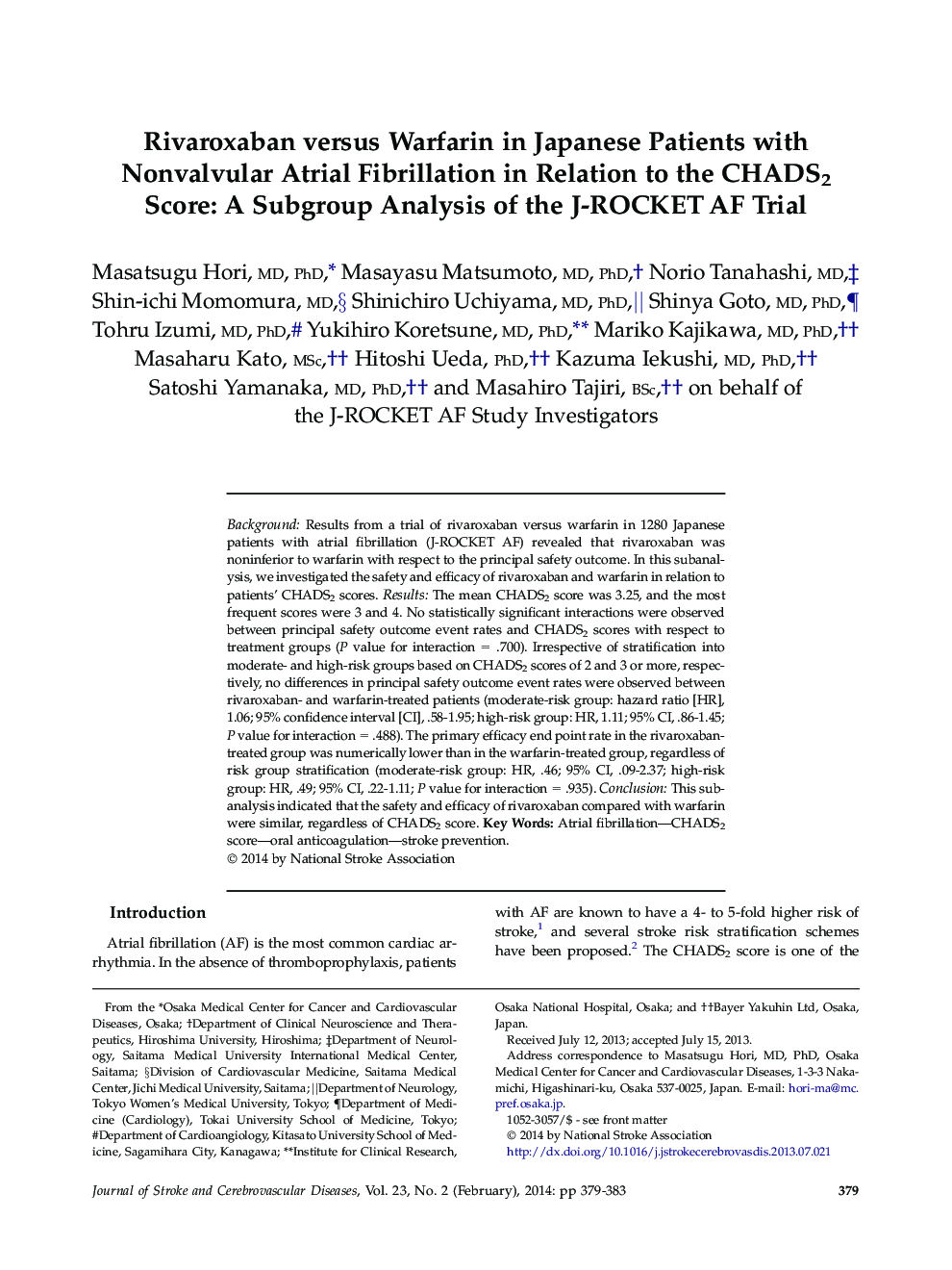| Article ID | Journal | Published Year | Pages | File Type |
|---|---|---|---|---|
| 5873455 | Journal of Stroke and Cerebrovascular Diseases | 2014 | 5 Pages |
BackgroundResults from a trial of rivaroxaban versus warfarin in 1280 Japanese patients with atrial fibrillation (J-ROCKET AF) revealed that rivaroxaban was noninferior to warfarin with respect to the principal safety outcome. In this subanalysis, we investigated the safety and efficacy of rivaroxaban and warfarin in relation to patients' CHADS2 scores.ResultsThe mean CHADS2 score was 3.25, and the most frequent scores were 3 and 4. No statistically significant interactions were observed between principal safety outcome event rates and CHADS2 scores with respect to treatment groups (P value for interaction = .700). Irrespective of stratification into moderate- and high-risk groups based on CHADS2 scores of 2 and 3 or more, respectively, no differences in principal safety outcome event rates were observed between rivaroxaban- and warfarin-treated patients (moderate-risk group: hazard ratio [HR], 1.06; 95% confidence interval [CI], .58-1.95; high-risk group: HR, 1.11; 95% CI, .86-1.45; P value for interaction = .488). The primary efficacy end point rate in the rivaroxaban-treated group was numerically lower than in the warfarin-treated group, regardless of risk group stratification (moderate-risk group: HR, .46; 95% CI, .09-2.37; high-risk group: HR, .49; 95% CI, .22-1.11; P value for interaction = .935).ConclusionThis subanalysis indicated that the safety and efficacy of rivaroxaban compared with warfarin were similar, regardless of CHADS2 score.
